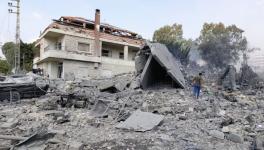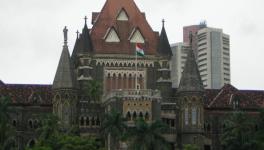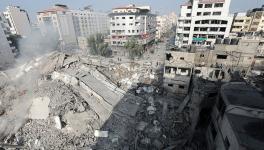Standing Up for Activist Linda Sarsour, Resistance Hero

Linda Sarsour and I are walking down the street of a liberal New England town. The day is warm, the sun with that twinkle that is essential to Spring in this part of the world. Hibernation is over; the streets are once more places to walk casually. A woman walks by, glances back at us and says to Linda, ‘You’re amazing. Thank you’. Linda, who is on her cell phone, says right back, ‘Thank you sister. We’re strong together.’
The previous evening, Linda had given a talk at Trinity College. The room was with her. The periodic applause was sympathetic and willing. Of the Women’s March on Washington, of which she is a co-chair, Linda said, ‘We organized a march for 200,000 people and a million extra people showed up.’ The people in the room – many of whom had been part of the march – burst into cheers. Each woman made the march, she said. Everyone was needed. Every body made a difference.
The talk was important. But so too was the aftermath. People of all ages, of a variety of backgrounds, came to embrace her. Her voice suggested an alternative to the world of Trump. ‘These are dangerous times,’ she said. This sentiment resonates with millions of people who live in the United States. It certainly touched people in this room. They came to the front, one at a time to offer their own fears: of deportation, of a draft, of war on North Korea, of the invalidation of a woman’s right to chose, of the Muslim ban. The issues are clear. The fear is palpable. Linda’s fearless stance reassures people in the room. Her voice gives others confidence. If she can stand in front of a room of two hundred people, then so can we. Here she is – a Muslim woman, a Palestinian woman, a woman in a hijab. None of this stops her. If she can do it, so can I, is the sentiment.
Before Linda arrived, my phone filled up with awful messages. It is not unusual for my phone at work to be home to hatred. Normally this bile is reserved for me. This time someone had noticed that I had invited Linda, so it was to my mailbox that they brought their hatred. These messages insulted Linda as a woman, as a Palestinian, as a Muslim, as everything that a certain section of American society has come to despite. The keywords of this hate were the same: terrorist, anti-Semite, Sharia Law. It was as if those who phoned were reading from a playbook. These are clichés. Racists are never innovative. Racism is boring.
On the morning of April 28th, a Brooklyn assemblyman – Dov Hikind – took to the New York Daily News with these tired talking points. The title of his nasty commentary – ‘CUNY’s platform for terror sympathizer Linda Sarsour’ – set the tone for what was to come. The main charge is that Linda is an ‘apologist for terrorism.’ Hikind’s evidence for this claim is resoundingly weak. It was a tweet. This is what public discourse has come to. No need to look at a person’s record. Focus on one tweet, magnify whatever message you wish to take from it and malign a person without fear of contradiction.

What was the tweet? Linda had posted a picture of a Palestinian child who was holding a rock. Her caption was ‘The definition of courage. #Palestine.’ The boy was walking towards what appear to be a riot police squad, heavily armed. Linda posted this image on 11 October 2015. In the first ten days of October 2015, Israeli forces had killed 199 Palestinians in shootings and clashes. ‘These are extrajudicial killings against unarmed civilians,’ said Mariam Farah of Amnesty International’s Israel office on 11 October – the day that Linda posted that image.
I was in Palestine later that year and investigated the knife attacks by young Palestinians – many children. What I found was that the bulk of those killed by Israeli forces had neither knives in their hands nor attempted any attack on the soldiers or civilians. I talked to a distinguished Palestinian from Jerusalem – Naseer – who told me of an incident he had seen between Nablus and Ramallah on 17 December 2015. At the military checkpoint at Huwaara, he saw an unarmed boy (age 15) – Abdullah Hussein Nasasra – being shot by the Israeli military in cold blood. The Israeli military said that Nasasra had ‘charged the forces while armed with a knife.’ The eyewitnesses I spoke with, including Naseer, told me that they saw Nasasra standing upright with his hands up and then down on the ground dead. When Kamal Badran Qabalan drove his ambulance to the scene, he was prevented from seeing the body.
This is the kind of incident that enrages young people to pick up rocks. It was the sense of the young people in Ramallah that I met a few days later. Frustration was the order of the day.
None of this context is with assemblyman Dov Hikind. For him, the mere tweet of a picture is evidence that Linda is a terrorist. He does not disclose that he – rather than Linda – has actually been a member of a terrorist organization. In 1970, Hikind was a member of the Jewish Defense League (JDL), which was founded by Rabbi Meir Kahane – a man who was convicted and sentenced to five years in federal prison for conspiracy to manufacture explosives. Hikind was Kahane’s ‘right-hand man,’ according to Akiva Eldar of Haaretz (1 June 2005). He was a close friend of Victor Vancier, ‘a militant Orthodox activist who later spent five and a half years in Federal prison for 18 bombings in New York and Washington’, wrote Elisabeth Bumiller in The New York Times (17 March 1996). Max Blumenthal, in The Nation (6 February 2013), alleged that Hikind had been involved with some of these bombings. The FBI says that the JDL is a ‘right-wing terror group.’ Assemblyman Hikind has a past in this group.
Linda Sarsour has no past or present in any ‘terror group.’ She is the focus of a targeted attack by people who have very murky pasts. Facts are irrelevant to people like Hikind. They are more interested in stirring up emotions, using code words (terrorist, anti-Semite) against those who they see as threats to their agenda. This is the worst kind of demagogy.
Linda is taking calls from friends who are outraged by what Hikind has written. They want to do something to support her. Linda is calm on these calls. She never loses her cool.
I ask her if the attacks get to her. This is of course not the first such attack. For over a decade now Linda has faced the wrath of those who are not willing to accept her as an outspoken defender of various causes.
Actually, it does not matter what positions she takes. That is not the issue. It is her very presence that offends. I ask her if she reads the hate mail. ‘I don’t read most of it,’ she says. But her eyes indicate that the lies hurt her. She is a human being. But they do not rattle her commitment. These attacks, she says, will not stop her from being forthright about her views.
What assemblyman Hikind hates about Linda is not this or that tweet. These messages are a red herring. What they despise is the presence of a Palestinian Muslim woman being outspoken and becoming a leader of the Resistance. They don’t like what she represents.
Edward Said, the most prominent Palestinian American, experienced the same kind of hatred. It was never only what Edward wrote or what he said that bothered his critics. He came to the University of Chicago during the start of the Gulf War in 1991 to give a major lecture. I was part of the student group that was to make sure that the room did not go out of hand. His critics had lined up at the microphone before he got to the hall. Later I mentioned this to him. Edward said, ‘They don’t want to listen to me. They just want to shut me up.’
This is precisely what is happening with Linda Sarsour, who should now wear Edward’s mantle with pride. She – like Edward – is a Palestinian American who is unapologetic about her support for her people. Unlike Edward, Linda is a Muslim woman who wears a hijab. This makes her a lightening rod for attack. Allowing people like assemblyman Hikind to get away with his bilious writing only emboldens others to try their best to silence Linda, as they had tried to silence Edward before. It will not succeed.
This article was made possible by the readers and supporters of AlterNet.
Disclaimer: The views expressed here are the author's personal views, and do not necessarily represent the views of Newsclick.
Vijay Prashad is professor of international studies at Trinity College in Hartford, Connecticut. He is the author of 18 books, including Arab Spring, Libyan Winter (AK Press, 2012), The Poorer Nations: A Possible History of the Global South (Verso, 2013) and The Death of a Nation and the Future of the Arab Revolution (University of California Press, 2016). His columns appear at AlterNet every Wednesday.
Get the latest reports & analysis with people's perspective on Protests, movements & deep analytical videos, discussions of the current affairs in your Telegram app. Subscribe to NewsClick's Telegram channel & get Real-Time updates on stories, as they get published on our website.
























